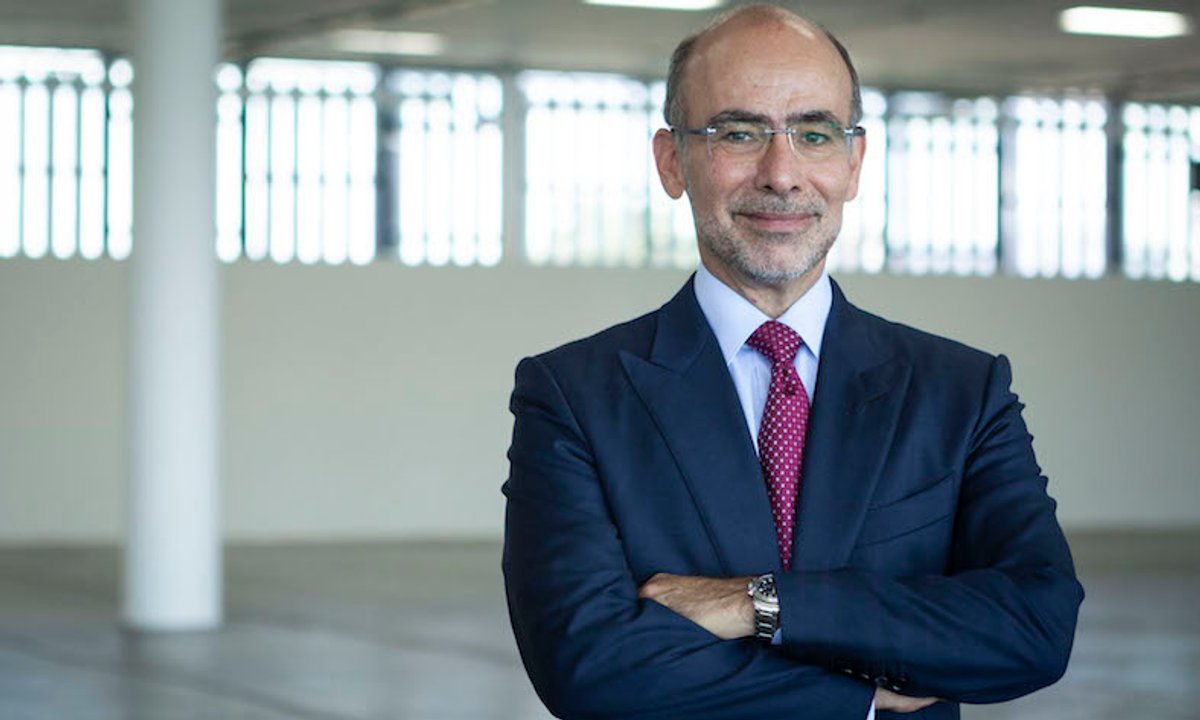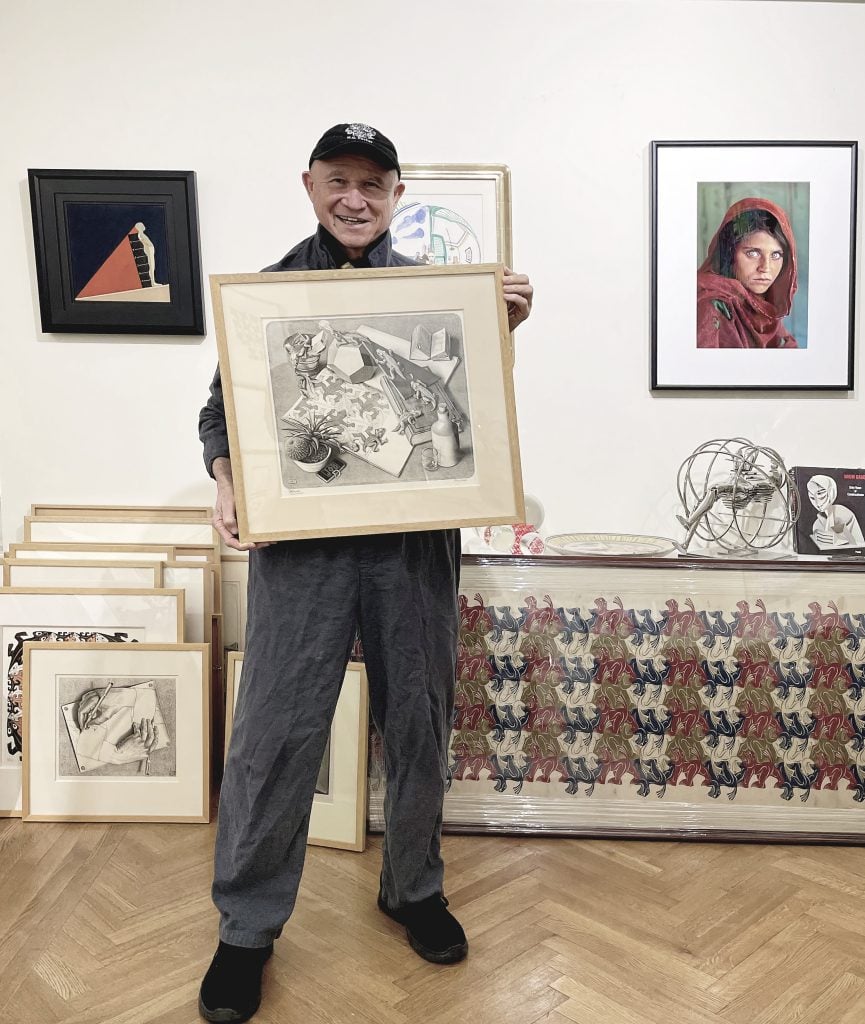Roca Carbón (Charcoal Rock)
2012 - Sculpture (Sculpture)
Mateo Lopez
With Roca Carbón (Charcoal Rock, 2012) and Roca Grafito ( Graphite Rock , 2012), López plays with our relationship to inert and unremarkable objects such as rocks. Traces of art history reverberate through the sculptures; their mediums reflect traditional materials for drawing and sketching, and the simplicity of their forms gesture toward minimalism. But López dislocates these common objects from their ordinary utility by replicating their component parts in paper, graphite, and charcoal, thus drawing attention to mechanisms of representation and translation.
Though he often works with paper and traditional techniques such as lithography, Mateo López is interested in expanding the scope of drawing and frequently operates outside of traditional studio situations to conjure personal experiences. His early studies in architecture equipped him to consider his medium in terms of time and space, and in three rather than two dimensions. The portability of López’s methods, along with his personal approach to collecting information from his personal journeys, has become a trademark of his installations. Drawings and trompe l’oeil objects, ranging from apples to clothing hangers to doors, extend beyond their sources of inspiration as sensuous entities, creating their own life in a Proustian narrative.
Colors:
Related works featuring themes of: » Andes Region, » Art That Plays With Scale, » Contemporary Conceptualism, » Found Objects, » Colombian
» see more

© » KADIST
Nicolás Paris
2012Nicolas Paris studied architecture and worked as an elementary school teacher before he decided to become an artist...

© » KADIST
Bernardo Ortiz
2011Casa de la cabeza (2011) is a drawing of the words of the title, which translate literally into English as “house of the head.” Ortiz uses this humorous phrase to engage the idea of living in your head....

© » KADIST
Johanna Calle
2003Calle’s drawings all inhabit received forms but alter them to call attention to specific qualities...

© » KADIST
Heman Chong
2009With a habit of reading eight to ten books at the same time, Chong paints his two-foot tall novel covers through referencing an extensive reading list (accessible on Facebook) he has kept since 2006...
Other related works, blended automatically
» see more

© » KADIST
Mateo Lopez
2012With Roca Carbon ( Charcoal Rock , 2012) and Roca Grafito ( Graphite Rock , 2012), López plays with our relationship to inert and unremarkable objects such as rocks...

© » KADIST
Nicolás Paris
2012Nicolas Paris studied architecture and worked as an elementary school teacher before he decided to become an artist...

© » KADIST
Bernardo Ortiz
2011Casa de la cabeza (2011) is a drawing of the words of the title, which translate literally into English as “house of the head.” Ortiz uses this humorous phrase to engage the idea of living in your head....

© » KADIST
Daniel Joseph Martinez
2005Martinez’s sculpture A meditation on the possibility… of romantic love or where you goin’ with that gun in your hand , Bobby Seale and Huey Newton discuss the relationship between expressionism and social reality in Hitler’s painting depicts the legendary Black Panther leaders Huey P...
Related works sharing similar palette
» see more

© » KADIST
Joana Hadjithomas & Khalil Joreige
Rocket Society refers to a space project led by a group of Armenian researchers at the beginning of the 1960s...

© » KADIST
LaToya Ruby Frazier
2011LaToya Ruby Frazier is an artist and a militant; her photos combine intimate views of her relation with her parents and grandparents with the history of the Afro-American community of Braddock, Pennsylvania, where she grew up and where her family still live...
Related works from the » 2010's created around » Bogota, Colombia
» see more

© » KADIST
Johanna Calle
2011Johanna Calle’s Abece “K” (2011) is part of a series of drawings (compiled into an artist book called Abece ) based on the alphabet...

© » KADIST
Nicolás Consuegra
2012A residency program in the blazing hot city of Honda, Colombia, inspired artist Nicolás Consuegra to consider the difficulty in understanding the needs of a distant community...

© » KADIST
Bernardo Ortiz
2011Casa de la cabeza (2011) is a drawing of the words of the title, which translate literally into English as “house of the head.” Ortiz uses this humorous phrase to engage the idea of living in your head....

© » KADIST
Nicolás Paris
2012Nicolas Paris studied architecture and worked as an elementary school teacher before he decided to become an artist...
Other works by: » Mateo Lopez
» see more

© » KADIST
Mateo Lopez
2012With Roca Carbon ( Charcoal Rock , 2012) and Roca Grafito ( Graphite Rock , 2012), López plays with our relationship to inert and unremarkable objects such as rocks...
Related artist(s) to: Mateo Lopez » Renata Lucas, » Nicolás Robbio, » Abraham Cruzvillegas, » Alexander Apóstol, » Carla Zaccagnini, » Carolina Caycedo, » Juan Araujo, » María Inés Rodríguez, » Adriana Lara, » Alejandro Cesarco
» see more

© » KADIST
Carla Zaccagnini
2005This series of photographs, Sobre la igualdad y las diferencias: casas gemelas (On Equality and Differences: Twin Houses) , taken in Havana in 2005, belongs to a wider group of works that the artist has been developing over many years, generally titled Bifurcaciones y encrucijadas (Forking Paths and Crossroads) ...

© » KADIST
Carolina Caycedo
2013In this two-channel video installation, Spaniards Named Her Magdalena, But Natives Called Her Yuma , Carolina Caycedo gathered footage during numerous research trips to dam sites in the Harz Mountains, Saxony, Westphalia and the Black Forest in Germany interspersed with images of the Rio Magdalena region in Colombia...

© » KADIST
Carolina Caycedo
2014YUMA o la tierra de los amigos (YUMA, or the Land of Friends) by Carolina Caycedo is a large mural containing a series of satellite photographs mounted on acrylic...
Related works found in the same semantic group
» see more

© » KADIST
Rachel Rose
2019First Born by Rachel Rose is part of a series of works titled Borns which expands on the artist’s longstanding interest in the organic shape of eggs...

© » KADIST
Xolo Cuintle
2020In a post-apocalyptic setting, a layer of dust petrifies everything in an eternal state of latency...

© » KADIST
Sahej Rahal
2015Within the narrative of Sahej Rahal’s The rocks we will find, beings perform absurd acts in derelict corners of the city, emerging into the everyday as if from the cracks of our civilization, transforming them into liminal sites of ritual, and challenging ways in which we experience time and space...






